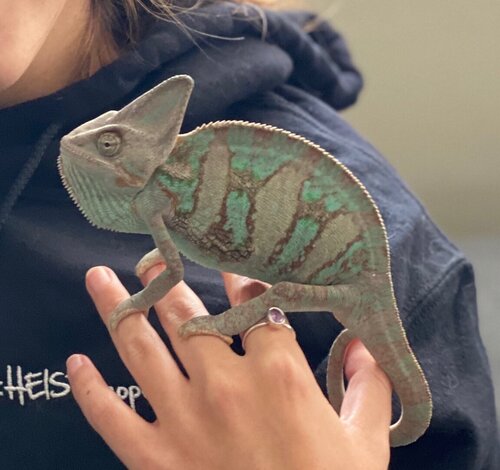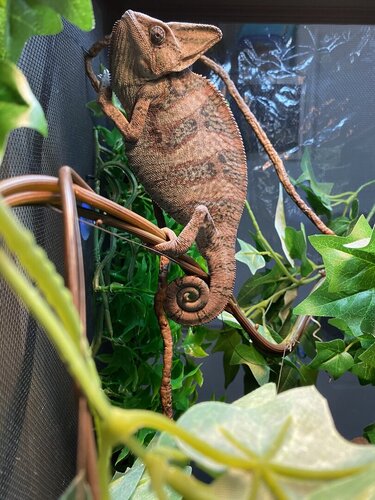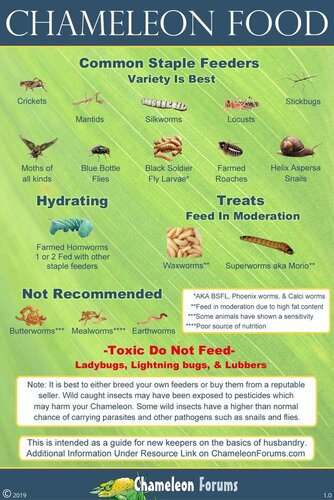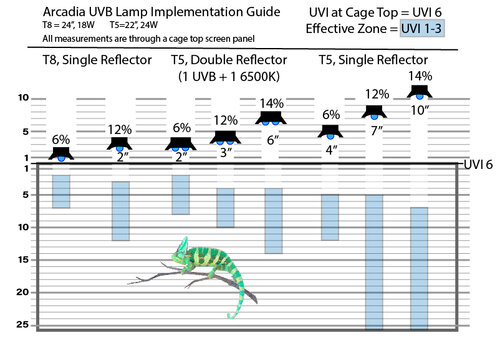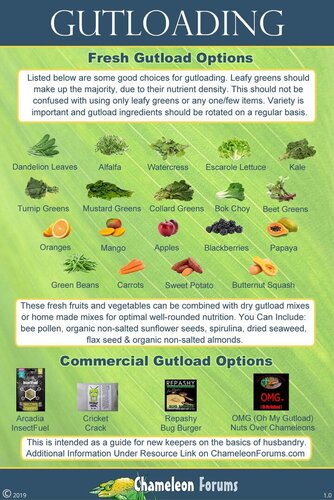CorneliustheCham
Member
Hi all, I'm new to this forum but was hoping I could get some answers on the odd coloration of my veiled chameleon. I've had him for about two months, I'm not positive how old he is (maybe that's another question you could answer from the photos!), and he's always shown ashy or brown colors during the day. I've tried adjusting his basking spot temperature, but that doesn't seem to change anything. He is very friendly and comes out once or twice a week, but his colors don't change when he's inside or outside his enclosure. I've filled out the husbandry questionnaire below, thank you for your suggestions and help!
Chameleon Info:
Cage Info:
Current Problem - The current problem you are concerned about. My chameleon consistently displays ashy or brown colors except when sleeping. Changing the basking temperature has not worked. Photos are attached of him in his cage, during handling, and of the enclosure itself.
Chameleon Info:
- Your Chameleon - The species, sex, and age of your chameleon. How long has it been in your care? Veiled chameleon, male, unsure of age but juvenile. I have owned him for about two months.
- Handling - How often do you handle your chameleon? Once or twice a week, only to sit in the windowsill and enjoy natural light. Very friendly.
- Feeding - What are you feeding your cham? What amount? What is the schedule? How are you gut-loading your feeders? Wax worms, super worms, hornworms, and sometimes crickets. Eats 5-6 worms or 7-8 crickets per day, never both.
- Supplements - What brand and type of calcium and vitamin products are you dusting your feeders with and what is the schedule? Calcium without D3 daily, Reptivites once every 2 weeks.
- Watering - What kind of watering technique do you use? How often and how long to you mist? Do you see your chameleon drinking? Dripper system throughout the day, misting by hand with a pressurized spray bottle 3-4x a day. Have only seen him drink a few times but refuses to drink from spray bottle or syringe.
- Fecal Description - Briefly note colors and consistency from recent droppings. Has this chameleon ever been tested for parasites? Defecates around 2x a week soft but firm, white or light yellow urates. Has never been tested for parasites.
- History - Any previous information about your cham that might be useful to others when trying to help you. Purchased from Petco, not breeder.
Cage Info:
- Cage Type - Describe your cage (Glass, Screen, Combo?) What are the dimensions? Screen 16x16x30 enclosure, but recently ordered a larger enclosure as that he has grown a lot in the last two months.
- Lighting - What brand, model, and types of lighting are you using? What is your daily lighting schedule? Reptisun T5 HO 10.0 UVB/UVA, Exo Terra Basking Spot lamp 75-Watt, 9AM-PM.
- Temperature - What temp range have you created (cage floor to basking spot)? Lowest overnight temp? How do you measure these temps? 72 at lowest point, 80-85 basking spot. 65 at night. Using two thermometer/humidity gauges at top and bottom of his cage.
- Humidity - What are your humidity levels? How are you creating and maintaining these levels? What do you use to measure humidity? Humidity fluctuates around 40%. I placed plastic on two sides of his enclosure to maintain humidity. Misting 3-4x a day.
- Plants - Are you using live plants? If so, what kind? No live plants, considering adding a ficus.
- Placement - Where is your cage located? Is it near any fans, air vents, or high traffic areas? At what height is the top of the cage relative to your room floor? Cage is located in the living room, I live alone and spend minimal time near his cage except for feeding and handling. Air conditioner in the room but rarely on. Top of cage sits about 6 feet from the floor.
- Location - Where are you geographically located? Living in Ohio.
Current Problem - The current problem you are concerned about. My chameleon consistently displays ashy or brown colors except when sleeping. Changing the basking temperature has not worked. Photos are attached of him in his cage, during handling, and of the enclosure itself.

